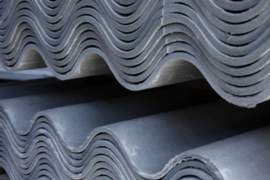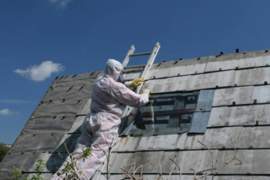
Asbestos In Homes

Must Read
Where is asbestos in my home? Asbestos can be found in a number of applications in the home. This is because asbestos is versatile and prior to a national ban on asbestos construction materials, the preferred and cheapest option for reliable building material. Not all asbestos in the home is a threat to the occupants, but identifying sources of possible asbestos contamination is critical to making decisions on asbestos abatement or other measures to protect your home from hazardous materials. Why was asbestos used in building materials? Asbestos has a number for versatile uses, namely fireproofing. Asbestos used for fire retardant purposes will be silicon based, similar to glass. This helps with fire resistance as these materials will not burn and instead will disintegrate under extreme heat. The asbestos used in the home is usually not pure asbestos, but an asbestos compound. The most typical application involved mixing or encasing the asbestos in Portland cement. The result is a durable and fire safe material that can be used for insulation. You will see this application on pipes and as roofing tiles. Asbestos has the benefit of being cheap, plentiful and easy to extract. Asbestos is a very soft material that can be easily rendered into a powdered form. Compounds can be formed through the use of powdered asbestos and this is the asbestos material that will be in your home. Asbestos materials in the wall Walls are going to have asbestos materials and some of it can be hazardous. Firstly, drywall made prior to the asbestos ban will contain asbestos. This is asbestos mixed into the gypsum plaster and then used as a quick solution to creating walls and ceilings in a structure. Compared to conventional methods of building, drywall was considered an excellent solution to the lengthy amount of time it took to lath and plaster during residential construction. Drywall has a standard shape and consistency, which makes it versatile for construction. Any instance where extra fireproofing was needed in the structure, you can expect asbestos drywall. Asbestos drywall is not typically dangerous unless it is exposed. Asbestos drywall will crumble during a renovation or demolition, so federal guidelines advise certain special precautions be taken to avoid self-contamination. These guidelines become mandatory for all non-residential structures. In addition to asbestos drywall, you can anticipate the joint compound used to bind the drywall together to also contain asbestos materials. These joint compounds are exceptionally friable, meaning that they are susceptible to breaking down and releasing friable fibers. Asbestos in the ceiling Asbestos in the ceiling one of the worse places you can find asbestos in the home. This is due to the fact that most applications of ceiling asbestos are friable. The most common application was popcorn ceilings, which is a spray able application that combined plaster and other materials. Popcorn ceilings were used for quick fire and sound proofing and well as covering faults in construction. The texture that results from the application is pitted and resembles the surface of a popcorn kernel. Popcorn ceilings are not durable in the slightest and will degrade through age and wear and degrade even faster if broken or disturbed. The friable material will leach asbestos fibers and can potentially sicken those that are exposed to it in the long term. Removal or at least encapsulation should be considered for popcorn ceilings in poor shape. Asbestos in the floor You may find asbestos in flooring tiles and this may not be much of a problem. Unless floor tiles are damaged or in exceptionally poor shape, any asbestos contained within the tile are generally not a danger. This is because most asbestos flooring tiles are encased in durable vinyl and other hard plastics. Asbestos can only escape and sicken you when it is directly exposed. Asbestos regulations even allow some asbestos tiles remain in a building during demolition as long as it is not in poor condition. You may have this form of asbestos in your home, but you are best served leaving it alone. Asbestos in the insulation These days we have fiberglass insulation and this is the most common insulating fibers used in new construction. Older structures however, will have asbestos fibrous insulation, which is potentially very dangerous. The danger derives from the nature of the asbestos, especially since typical insulation is the asbestos wool covered with heavy paper. Once this is disturbed, it will steadily release asbestos fibers and in enclosed spaces, such as attics, the concentration of fibers will be very high and hazardous. Asbestos on the house You will also find asbestos on your home in the form of roofing tiles and siding. In terms of roofing, tiles will be composed of friable asbestos encased in a compound of tar and other materials. In addition, the tiles may be secured to the roof with asbestos felt, which will have insulating properties, although being incredibly friable when exposed. Portland cement siding, which is largely defunct, will be found on older homes and these siding tiles may contain friable asbestos. Should I remove asbestos from my home? There is no law that explicitly states you must remove asbestos from your home. You are bound by laws that provide for the safe disposal of asbestos containing materials and other statutes that provide penalties for irresponsible abatement. The fact is, most asbestos in the home is not dangerous until there is renovation or demolition taking place. Self-removal of asbestos containing materials will potentially cause more harm than necessary as since breaching indurate material will cause the mass release of harmful fibers. Asbestos abatement procedure minimizes this risk by mandating adequate protection, filters to trap loose particles and techniques such as wetting friable asbestos to prevent fibers from becoming airborne. What are my alternatives for asbestos my home? You can seal asbestos fibers to prevent their escape. This is cheaper than removing all the materials and replacing it with safer alternatives. This is called encapsulation and can be performed by a licensed asbestos contractor.


















